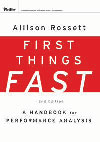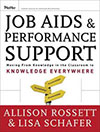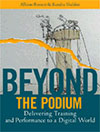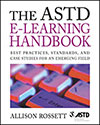When I was a young professor of instructional design and technology at San Diego State University, students often sought advice on how to make decisions about outcomes and strategies. At that time, back in the late 70s, mostly they were concerned about instructional design for face-to-face classes. Even when working on classroom programs, they were flummoxed by the scores of decisions they had to make.
My students wanted help with planning. Some call that planning needs assessment. Others prefer needs analysis. Many weigh in for performance analysis or front end analysis. One nickname that makes me smile is disambiguating whatchamacallit. No kidding.
Analysis is what we do before we do anything. It is our quest for evidence that helps decide what’s in and what’s out, the readiness and priorities of the audience, and the fertility of the culture. Analysis is systematic planning and systemic execution.
What should analysis look like today– as our considerations include the classroom and extend beyond it to a buffet of solutions such as mobile and social and MOOC and informal and formal learning.
Analysis basics
A client called to talk about ways to use mobile devices to help sales people understand and appreciate a new product they soon will be selling. Mobile, hmmmm? Should she instead develop scenarios and opportunities for extensive practice? Or perhaps she should seek out videos that demonstrate the skills, knowledge and habits she wants to put in place? And what of connections to related resources? Surely all that deserves a place in a seller development system.
There, I did it too. I embraced solutions without a shred of data about this work, workplace and worker.
I know we can do better. Analysis is how we do better.
Analysis is how workforce learning professionals decide what to do, given a world where you can’t do everything, respond to every request, meet every need, use every groovy technology.
During analysis, the enterprise seeks two overarching kinds of information: directions and drivers. When the focus is directions, we are looking for the performance and perspectives that the organization and its leaders are eager to put in place. What must the sellers know and do in order to do right by the product, enterprise goals, and their customers?
Performance drivers are the forces that block or enable performance– including those that might do so in the future, for example, when our seller attempts to demonstrate and sell the new product. Typical drivers are their skills, motivation, incentives, tools, and work processes. What of the sales managers? Are they on board with the new product?
In the table below, the purposes for the effort are to the left. Key questions are to the right.
| Purposes for the effort | What might we do? How would it work? What questions might be asked? |
| The substance of the program | What is the essence of this product? Why was it developed? How does this product fit into organizational strategy? Into prior products and systems? |
| Support for the effort | Talk to experts, to sponsors, to sales people, and to their supervisors. Where appropriate, look to the published literature and to work products. What questions will customers raise? What can you learn from prior roll-outs? |
| Optimals: What must be known of the new product, of selling it, of competitors, of positioning the product to deliver value to customers? | What is it that an effective sales person must know about this product? Features? Functions? Comparisons to prior, related products? Competitors? What are the objections? How would one counter? What of disclosure? What must be said? What must be known by heart by the sellers, with fluency? What can be referenced before and after? What can be referenced during sales interactions? |
| Actuals: What do they currently know and do? What are they selling? Avoiding? | What is already known by the sales force? Are they familiar with a similar product? Users? Are they familiar with the problem the product addresses or the opportunity to which it responds? Any concerns about negative transfer? Are they keen on the new product? |
| Gaps | Get clear about priority gaps, derived from the relationship between optimals and actuals. Be very clear about the outcomes that are promised and how they link to meaningful sales and customer focus. |
| Causes/Drivers: What now gets in the way of sales? If this is brand new, what might get in the way? | Do they know enough to sell the product? What more must be known? Must it be known by heart? Is it so complex that it could not ALL be known? Do they see the benefits of this product? Are they confident about selling it? What of their supervisors? What of their customers? Do they have technology to enable access to on demand resources? Do existing assets answer key questions? What of the incentive system? What happens if they don’t sell it? |
| Solutions | Given what has been discovered about causes and drivers, what solutions system is most likely to work? What must be done to ready both the sellers and the organization? |
In the past, these question were posed and answered face-to-face. More frequently now, interviews, surveys and groups are happening online, with diligence about the examinations of documents, policies and work products.
But wait. Now, in a world of new technologies and increased expectations, there’s even more.
New Analysis
With heaps of respect for online survey tools (Survey Monkey, Qualtrics, and Zoomerang, for example) and web conferencing technologies (Connect, NetMeeting, and Wimba, for example), new forms of analysis turn attention to data that is waiting for us. It is already there in the bowels of the organization.
Like what?
- sales figures from prior roll-outs
- sales figures and progress in the test geography where the company elected to test drive the product roll-out
- customer messages and ratings of appreciation and complaint
- exit interviews with sellers
- use figures for prior learning, information and support strategies
- If you want to know what concerns sales people about the new product, establish a wiki or blog and ask for opinions. That’s a good place to seek the questions their customers are posing too.
- If you want to know the experience that customers in test geographies are having with the product, mine public sites. How do you find relevant blogs? Try blogsearch.google.com
- If you want to move the needle on sales for the new product and perhaps on sales, in general, look to big data. Unlock value by making information and patterns transparent. Use the data within to reveal needs, problems and opportunities. Use customer data to target offerings and to help sales people understand the match between the new product and unique customer needs and installed base.
I am not the only one who is keen on these emerging possibilities. Xyleme CEO Jeff Katzman said this in a blog post: “Needs analysis that was the purview of the ISD, can be replaced by social commenting, ratings and analytics.” He continued, “Your users will tell you what they want, what’s working, and where the gaps are. Analytics will tell you what’s being used, and how effective it is.”
AND not OR
In essence, the goal is to do right by the people and organizations we serve. That will involve many approaches to gathering data, not just one. The analyst today will eagerly seek understanding in all available ethical ways, from conversations on the fly in elevators, to back and forth via Twitter streams, to analytics based on purchasing, repair, help desk and HR data bases. While the means have expanded, the purposes for inquiry remain the same. We want to know what they know, what they value, what they do, and why, and how the culture in the organization is propelling and constraining their choices.
Allison Rossett has written three books about planning. Her most recent is the new edition of First Things Fast: A Handbook for Performance Analysis.






Fantastic article, so rich yet kept simple and clear. It’s a very exciting time to be getting into instructional design or whatever which tens of different names it goes by…